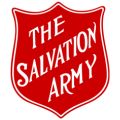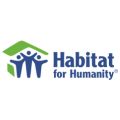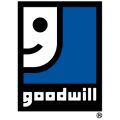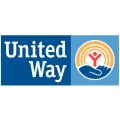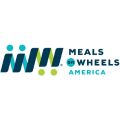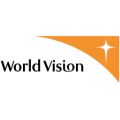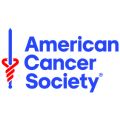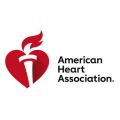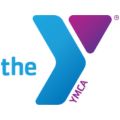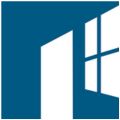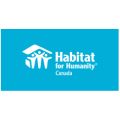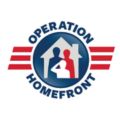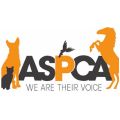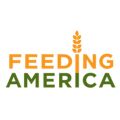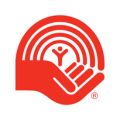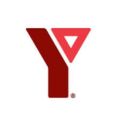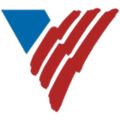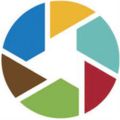Overview
The community food and housing, and emergency and other relief services industry is a sector dedicated to providing essential support and assistance to individuals and communities facing various forms of crisis and hardship. It encompasses organizations and services that offer food assistance, housing support, and emergency relief to those in need. This industry plays a vital role in addressing poverty, homelessness, natural disasters, and other emergencies, aiming to ensure the basic needs of individuals and families are met during challenging times. These services often rely on donations, volunteers, and government funding to carry out their missions and provide vital aid to vulnerable populations.
GAO’s RFID, BLE, IoT, and drone technologies have helped its customers in community food and housing, and emergency and other relief services industry to improve their work processes, their operations and productivity by better management of their staff, materials and operational equipment such as food storage containers, refrigerators, freezers, commercial kitchen equipment, food prep tools, food transport vehicles, tents, sleeping bags, hygiene kits, water purification systems, generators, first aid kits, communication devices, disaster response vehicles and emergency shelters.
Ranked as a top 10 global RFID supplier and based in New York City and Toronto, GAO RFID Inc offers a wide choice of RFID (radio frequency identification) readers and tags at ultra high frequency (UHF), high frequency (HF, including NFC) and low frequency (LF), BLE (Low Energy Bluetooth) gateways and beacons, and various RFID and BLE systems such as people tracking, asset tracking, access control, parking control, fleet management, WIP (work in progress), traceability. Such RFID and BLE products and systems, together with its IoT and drone technologies, have been widely used in community food and housing, and emergency and other relief services industry. Its sister company, GAO Tek Inc. https://gaotek.com, is a leading supplier of industrial or commercial testers and analyzers, drones, and network products.
Applications & Benefits of GAO’s RFID, BLE, IoT & Drones for the Community Food and Housing, and Emergency and Other Relief Services
To satisfy its customers, GAO’s RFID or RFID Systems for community food and housing, and Emergency and other Relief Services Industry are offered in 2 versions. One version is that its software is running on a local server that normally is on our client’s premise, and another version runs in the cloud. The cloud server could be GAO’s cloud server, client’s own cloud server or a cloud server from one of the leading cloud server providers such as Amazon Web Services (AWS), Microsoft Azure, Google Cloud, IBM Cloud (formerly SoftLayer), Oracle Cloud, RedHat, Heroku, Digital Ocean, CloudFlare, Linode and Rackspace. The above illustrates GAO system for community food and housing, and Emergency and other Relief Services Industry with its software running on a local server.
The above illustrates GAO system for community food and housing, and Emergency and other Relief Services Industry with its software running in cloud.
GAO’s RFID and BLE technologies, consisting of RFID readers, RFID tags, BLE gateways, BLE beacons, software, cloud services and their systems, have the following applications in Community Food and Housing, and Emergency and other Relief Services Industry:
- Inventory and Asset Tracking: GAO’s RFID tags are employed to track and manage essential supplies, food stocks, and housing equipment within the Community Food and Housing, and Emergency and other Relief Services Industry. Our RFID readers and software enable real-time monitoring of inventory levels, ensuring optimal stock levels and preventing shortages.
- Personnel and Volunteer Management: GAO’s RFID badges can be issued to workers, volunteers, and relief personnel, allowing for easy identification and tracking. By using our RFID readers and cloud services, organizations can monitor personnel movements, ensure safety in disaster zones, and manage shift rotations efficiently.
- Emergency Equipment Monitoring: RFID tags attached to critical emergency equipment, such as medical supplies, tents, and water purifiers, enable real-time monitoring of their status and location. This ensures that essential resources are readily available and properly maintained during relief operations.
- Evacuation and Shelter Management: GAO’s RFID and BLE technologies facilitate streamlined evacuation processes and efficient shelter management. RFID badges can be distributed to evacuees for easy identification and tracking, while BLE beacons help guide individuals to designated safe zones.
- Cold Chain Management: In the Community Food and Housing, and Emergency and other Relief Services Industry, maintaining the quality of perishable food and medical supplies is crucial. GAO’s RFID temperature tags and BLE gateways monitor the cold chain, ensuring that these sensitive items are stored and transported within the required temperature range.
- Disaster Relief Distribution: RFID technology is utilized to track and manage the distribution of relief goods. RFID tags on relief packages enable efficient sorting, loading, and distribution, while RFID readers and cloud services provide real-time visibility into the distribution process.
- Identification and Authentication: GAO’s RFID technology is utilized for secure identification and authentication purposes. RFID badges and access control systems help regulate entry to restricted areas, ensuring only authorized personnel have access to critical facilities and resources.
- Public Health Tracking: During disease outbreaks or emergency situations, RFID tags can be employed to track the movement of affected individuals, allowing health authorities to conduct contact tracing and manage potential disease spread.
- Waste Management and Recycling: In relief operations, GAO’s RFID tags can be integrated into waste bins to facilitate proper waste segregation and recycling efforts, contributing to environmentally sustainable practices.
- Resource Allocation and Planning: GAO’s RFID and BLE technologies provide valuable data for resource allocation and strategic planning. By analyzing data from RFID readers and cloud services, organizations can make informed decisions to optimize relief efforts and enhance overall efficiency.
GAO’s drone technologies find the following applications in the community food and housing, and emergency and other relief services industry:
- Disaster Assessment and Response: GAO’s drones equipped with advanced imaging sensors and GAO RFID technology enable rapid and comprehensive assessment of disaster-stricken areas. We can quickly gather critical data on damages, identify hazards, and assess resource needs, facilitating prompt and targeted relief efforts.
- Emergency Supply Delivery: With our specialized drones, we can swiftly deliver essential supplies, such as food, water, and medical equipment, to remote or hard-to-reach areas during emergencies. This capability is particularly valuable in times of crisis when traditional transportation may be hindered.
- Search and Rescue Operations: GAO’s drones equipped with thermal imaging and GPS technology aid in locating missing individuals in disaster zones or challenging terrains. They can cover large areas in a short time, assisting emergency responders in finding and saving lives.
- Crop Monitoring and Assessment: Utilizing GAO’s drone fleet, we can perform efficient and precise monitoring of crops in the Community Food and Housing, and Emergency and other Relief Services Industry. These drones can assess crop health, detect potential issues, and optimize resource allocation for improved agricultural productivity.
- Surveillance and Security: Our drones equipped with high-definition cameras and intelligent AI-based analytics help monitor and secure critical facilities and food storage areas. They can detect unauthorized access, potential threats, and ensure compliance with safety regulations.
- Infrastructure Inspection: GAO’s drones equipped with advanced sensors and RFID technology streamline the inspection of community housing and emergency infrastructure. These drones can assess structural integrity, identify maintenance needs, and help prevent potential hazards.
- Environmental Monitoring: Leveraging our drone technology, we can conduct environmental assessments to evaluate the impact of disasters on local ecosystems. This data helps inform conservation efforts and guides long-term recovery strategies.
- Public Awareness and Education: GAO’s drones can capture aerial footage and live broadcasts during emergency situations, providing real-time updates to the public and enhancing awareness. These visuals aid in conveying critical information and ensuring public safety.
- Health and Hygiene Initiatives: Drones equipped with sanitization equipment can assist in maintaining hygienic conditions in communal spaces and emergency shelters, supporting health initiatives and disease prevention efforts.
- Urban Planning and Resource Allocation: By utilizing GAO’s drone technology, we can gather data on population movements, infrastructure needs, and resource distribution patterns. This information assists in strategic urban planning and efficient allocation of relief resources.
GAO’s IoT technologies, consisting of IoT sensors, sensors networks and systems, find the following applications in the community food and housing, and emergency and other relief services industry:
- Food Quality Monitoring: GAO’s IoT sensors can be deployed in food storage facilities, community kitchens, and distribution centers to monitor temperature, humidity, and other environmental factors. We can provide real-time data to ensure food quality and safety, minimizing spoilage and ensuring that residents receive fresh and safe food supplies.
- Smart Shelter Management: In the Community Food and Housing, and Emergency and other Relief Services Industry, GAO’s IoT systems enable smart shelter management. We can implement occupancy sensors to track the number of occupants in emergency shelters, monitor indoor air quality, and optimize resource allocation for residents’ comfort.
- Water and Resource Management: IoT sensors can be used to monitor water levels, quality, and consumption in community housing and emergency relief facilities. GAO’s systems allow for efficient resource management, ensuring an adequate supply of clean water and preventing wastage.
- Environmental Monitoring: GAO’s IoT sensor networks can be deployed to monitor environmental conditions in disaster-stricken areas. We can measure air quality, detect harmful pollutants, and assess potential health risks for residents and relief workers.
- Structural Health Monitoring: In the Emergency and other Relief Services Industry, GAO’s IoT sensors can be integrated into buildings and critical infrastructure to monitor structural health. This enables early detection of damages, ensuring the safety of occupants and facilitating timely repairs.
- Occupant Safety and Security: GAO’s IoT systems can enhance security in community housing and emergency shelters. We can deploy motion sensors, door/window sensors, and smart locks to monitor access and ensure the safety of residents.
- Health and Medical Monitoring: IoT sensors can be utilized to monitor the health of vulnerable populations in relief facilities. GAO’s systems can track vital signs, detect emergencies, and notify medical personnel in real-time for prompt intervention.
- Waste Management and Recycling: GAO’s IoT technologies can be employed to optimize waste management in community housing and relief centers. We can use smart bins equipped with sensors to monitor waste levels, leading to efficient collection and recycling processes.
- Emergency Response Coordination: GAO’s IoT sensor networks facilitate effective emergency response coordination. We can integrate GPS tracking and communication devices into relief personnel’s equipment, enabling efficient deployment and real-time communication during rescue operations.
- Community Engagement and Information Dissemination: GAO’s IoT systems enable community engagement through interactive displays and communication interfaces. We can disseminate important information, safety guidelines, and updates to residents and relief service beneficiaries.
GAO’s Assists Clients with Standards, Mandates & Regulations of the Community Food and Housing, and Emergency and Other Relief Services
GAO RFID Inc. has developed its products and systems in compliance with industry standards and mandates. GAO has assisted our customers in Community Food and Housing, and Emergency and other Relief Services Industry to deploy RFID, BLE, IoT and drone systems and to ensure such deployments complying with applicable industry standards, U.S. government regulations and Canadian government regulations such as:
RFID, BLE, IoT, & Drone Standards & Mandates
- ISO 18000-6C
- EPCglobal UHF Class 1 Generation 2
- ISO/IEC 18092
- Bluetooth SIG
- IEEE 802.15.4
- MQTT
- CoAP
- RESTful APIs
- International Civil Aviation Organization (ICAO)
- ASTM F3321
- Animal Disease Traceability (ADT) Program
- GS1 Standards
- Health Insurance Portability and Accountability Act (HIPAA)
- National Fire Protection Association (NFPA) Codes
- Food Safety Modernization Act (FSMA)
US Government Regulations:
- FEMA (Federal Emergency Management Agency) Regulations
- HUD (U.S. Department of Housing and Urban Development) Regulations
- FDA (U.S. Food and Drug Administration) Regulations
- USDA (U.S. Department of Agriculture) Regulations
- OSHA (Occupational Safety and Health Administration) Regulations
Canadian Government Regulations:
- CFIA (Canadian Food Inspection Agency) Regulations
- Health Canada Regulations
- Emergency Management Act Regulations
- Canada Emergency Wage Subsidy (CEWS) Regulations
- Canada Emergency Rent Subsidy (CERS) Regulations
GAO Software Provides Easy Integration with API
GAO’s RFID and BLE software offers a free trial for both the server-based and cloud versions, and offers an API to the important systems in the community food and housing, and emergency and other relief services such as:
Personnel Management:
- Employee scheduling and shift management
- Volunteer coordination and tracking
- Training and certification management
- Performance evaluation and feedback systems
- HR administration and payroll management
Equipment Management:
- Inventory tracking and management for food, medical, and other supplies
- Maintenance scheduling and tracking for equipment and vehicles
- Equipment and asset allocation and tracking
- Resource planning and optimization for efficient use of equipment
Access Control:
- Visitor management and registration systems
- Security and access control for restricted areas
- ID card or badge management for staff and volunteers
- Monitoring and logging access activities for audit purposes
Warehouse Management:
- Inventory control and optimization for food and relief supplies
- Order processing and fulfillment
- Goods receiving, storage, and picking optimization
- Shelf life and expiration date tracking
- Warehouse layout and space utilization planning
Supply Chain Management:
- Demand forecasting and planning for food and relief supplies
- Supplier management and sourcing
- Transportation and logistics optimization
- Real-time tracking and visibility of goods in transit
- Collaboration and communication tools for supply chain stakeholders
Other Applications:
- Donation management and tracking
- Client intake and case management systems
- Reporting and analytics for program evaluation and funding purposes
- Outreach and communication tools for community engagement
- Disaster response and emergency coordination systems
GAO’s RFID and BLE software offers a free trial for both the server-based and cloud versions, and offers an API to the important systems in Community Food and Housing, and Emergency and other Relief Services Industry such as: Personnel Management, Equipment Management, Access Control, Warehouse Management, Supply Chain Management, Donor and Volunteer Management, Inventory Control, Resource Allocation and Planning, Emergency Response Coordination, Health and Safety Compliance.
GAO has enabled its customers to make use of some of leading software and cloud services in the community food and housing, and emergency and other relief services industry. Below are some of popular software and cloud services in the community food and housing, and emergency and other relief services industry: SAP SuccessFactors, Oracle NetSuite, Microsoft Dynamics 365, Salesforce, Sage Intacct, Infor Cloud Suite, Epicor ERP, Zoho People, Fishbowl Inventory, Blue Yonder (formerly JDA Software), HighJump Warehouse Management System, Manhattan Associates.
GAO has worked with some of the leading technology companies in the community food and housing, and emergency and other relief services in to provide integrated its RFID, BLE, IoT and drone solutions to customers. Here are some of the technology leaders in the community food and housing, and emergency and other relief services industry: IBM Corporation, Cisco Systems, Inc., Microsoft Corporation, Oracle Corporation, Siemens, Amazon Web Services (AWS), Qualcomm Incorporated, Schneider Electric, Honeywell International Inc., Intel Corporation, Hewlett Packard Enterprise, Dell Technologies Inc.
Case Studies of RFID Applications
Below are some RFID application cases in the community food and housing, and emergency and other relief services industry.
Feeding America, the largest hunger-relief organization in the United States, implemented RFID technology to enhance their food bank operations. They utilized RFID tags and readers to track and manage inventory in their warehouses, improving efficiency in receiving, inventory management, and order fulfillment. The RFID system provided real-time visibility of food supplies, enabling better planning and reducing waste.
Daily Bread Food Bank in Canada implemented RFID technology to optimize their warehouse operations and enhance food distribution. By using RFID tags and readers, they improved inventory accuracy, reduced manual handling, and streamlined the order picking process. The RFID system allowed them to efficiently track food donations, monitor expiry dates, and ensure the timely distribution of fresh and safe food to those in need.
The American Red Cross deployed RFID technology in their disaster response operations to improve efficiency and accountability. They utilized RFID tags and scanners to track and manage emergency supplies, such as medical kits and relief items, ensuring their availability during critical situations. The RFID system enabled faster inventory checks, reduced errors, and enhanced coordination in distributing resources to affected areas.
Second Harvest, a leading food rescue organization in Canada, implemented UHF RFID technology to optimize their food recovery and distribution process. They utilized UHF RFID tags and readers to track donated food items, enabling real-time inventory management and reducing food waste. The UHF RFID system improved their ability to identify and distribute surplus food to community organizations efficiently.
Food Banks Canada implemented UHF RFID technology to optimize their food distribution network. They utilized UHF RFID tags and readers to track food inventory across multiple food banks and warehouses, improving supply chain visibility and reducing inefficiencies. The UHF RFID system enhanced their ability to forecast demand, manage inventory, and ensure the timely delivery of food to individuals and families in need.
Many applications of RFID by GAO can be found here.
Case Studies of IoT Applications
Below are some IoT application cases in Community Food and Housing, and Emergency and other Relief Services Industry.
An IoT-based solution implemented in a major food bank in the USA. The system uses sensors and RFID technology to monitor inventory levels, track expiration dates, and optimize the distribution of food supplies to various community food centers, ensuring timely delivery and minimizing waste.
IoT-enabled emergency shelters in disaster-prone regions of the USA. The shelters use IoT sensors for occupancy monitoring, environmental control (temperature and air quality), and real-time communication to coordinate relief efforts and ensure the safety and well-being of occupants.
A pilot project in a USA-based community housing complex that uses IoT sensors to monitor water consumption, detect leaks, and optimize water usage. The system helps reduce water wastage and promotes sustainable water management practices.
An IoT-based inventory management system implemented in a relief organization in the USA. The system uses RFID tags to track medical supplies, equipment, and relief items, streamlining the inventory management process and ensuring efficient distribution during emergencies.
IoT sensors deployed in various community centers and housing areas in the USA to monitor air quality. The data collected helps identify pollution hotspots, assess health risks, and implement targeted interventions for improved public health.
IoT-based smart greenhouses are employed in Canada to optimize food production in community gardens and urban farms. IoT sensors monitor temperature, humidity, and soil conditions, allowing precise control and efficient use of resources.
IoT sensors are used to remotely monitor the conditions in emergency shelters in Canada. These sensors track occupancy, indoor air quality, and temperature, helping relief organizations ensure the safety and well-being of shelter residents.
IoT technology is utilized in Canada’s food distribution network to maintain the cold chain integrity of perishable food items. IoT temperature sensors track the storage and transportation conditions of food supplies, ensuring food safety and reducing waste.
IoT-based water management systems are implemented in disaster-stricken areas in Canada to monitor water sources, quality, and consumption. These systems help optimize water allocation and ensure sufficient supply for relief efforts and affected communities.
Case Studies of Drone Applications
Below are some drone application cases in Community Food and Housing, and Emergency and other Relief Services Industry.
Drones have been utilized by emergency relief organizations in the USA to deliver medical supplies, vaccines, and critical medications to remote and disaster-stricken areas. This has enabled faster response times and improved access to essential healthcare resources.
Drones are employed in the USA to conduct aerial surveys and assess damages in disaster-affected regions. After hurricanes, wildfires, or floods, drones capture high-resolution images and data, aiding relief agencies in planning and prioritizing response efforts.
In emergency situations, drones equipped with thermal imaging and live-streaming capabilities have been deployed in the USA to locate and rescue missing individuals. These drones cover large areas quickly and efficiently, assisting search and rescue teams in their efforts.
Drones equipped with multispectral cameras are used in Canada to monitor crop health and optimize food production in community gardens and urban farms. This technology aids in precision agriculture practices, leading to increased yields and efficient resource utilization.
Drones have been employed in Canada to create detailed aerial maps of disaster-stricken areas, such as flood-prone regions and wildfire zones. These maps assist relief agencies in understanding the extent of damages and planning response strategies.
In Canada, drones equipped with high-resolution cameras are used to monitor wildlife populations in disaster-affected regions. This data helps wildlife conservation efforts and informs rescue operations that involve animals impacted by emergencies.
GAO RFID Systems & Hardware for the Community Food and Housing, and Emergency and Other Relief Services
GAO RFID Inc. offers the largest selection of BLE gateways, BLE beacons, RFID readers, tags, antenna, printers, and integrated RFID systems for various industries, including the community food and housing, and emergency and other relief services.
BLE (Bluetooth Low Energy)
GAO offers advanced BLE gateways:
as well as versatile beacons with such important functions as temperature, humility, vibration and panic button:
GAO’s BLE technology is suitable for many industries, including the community food and housing, and emergency and other relief services.
UHF (Ultra High Frequency) RFID
GAO offers the largest selection of UHF RFID readers for various industries, including the community food and housing, and emergency and other relief services:
GAO RFID offers the widest choice of UHF RFID tags, labels, badges, wristbands for various industries, including the community food and housing, and emergency and other relief services:
and an array of antennas to address different applications:
HF (High Frequency), NFC (Near Field Communications) and LF (Low Frequency) RFID
GAO offers the largest selection of HF, NFC, and LF RFID readers for various industries, including the community food and housing, and emergency and other relief services:
HF, NFC and LF RFID tags, labels, badges, wristbands for various industries, including the community food and housing, and emergency and other relief services:
and antennas:
GAO also offers RFID printers:
Digital I/O adapters:
and relay controllers:
For embedded applications, GAO offers UHF, HF and LF RFID reader modules:
- Find Your 860-960 MHz RFID Module
- Find Your 13.56 MHz High Frequency RFID Module
- Find Your 125 kHz RFID Reader Modules
The RFID systems by GAO are highly popular for clients in the community food and housing, and emergency and other relief services:
People or workers tracking system:
Physical asset or operational equipment tracking system:
Assets that can be effectively tracked using GAO’s technologies include Food Trucks, Mobile Shelters, Generators, Water Purification Systems, Portable Toilets, Medical Tents, Emergency Lighting Systems, Communication Equipment, Cooling and Heating Units, Rapid Deployment Shelters, Water Tanks, Field Kitchen Units, Emergency Response Vehicles, First Aid Kits, Heavy Machinery.
People or workers tracking system:
Personnel or people access control system:
Parking or vehicle control system:
Furthermore, GAO provides the customization of RFID tags, RFID readers, BLE beacons and BLE gateways, IoT, drones, and systems and consulting services for community food and housing, and Emergency and other Relief Services Industry and for various industries in all metropolitans in the U.S. and Canada:
GAO Has Served the Community Food and Housing, And Emergency and Other Relief Services Extensively
GAO RFID Inc. and its sister company GAO Tek Inc. together offer a wide choice of RFID, BLE, IoT, drone, testing and measurement devices, and network products.
GAO’s products and technologies have helped its customers in the community food and housing, and emergency and other relief services Industry to achieve success in digital transformation, data analytics, remote monitoring, mobile applications, blockchain technology, internet of things (IoT), artificial intelligence (AI), machine learning, predictive analytics, smart shelters, community resilience, disaster preparedness, food security, sustainable solutions, volunteer management, crisis communication, supply chain optimization, collaborative partnerships, social impact measurement, rapid response, humanitarian aid and community engagement.
GAO RFID Inc. has deployed RFID, BLE and IoT projects for many companies in Community Food and Housing, and Emergency and other Relief Services Industry, including many in its various divisions such as
- Food Banks and Food Assistance Programs: Organizations dedicated to collecting, storing, and distributing food to individuals and families facing food insecurity.
- Homeless Shelters and Housing Services: Facilities and programs that provide temporary housing, shelter, and supportive services for individuals experiencing homelessness.
- Disaster Relief and Emergency Response: Agencies and organizations involved in providing immediate assistance, rescue operations, and relief efforts during natural disasters, emergencies, and crisis situations.
- Social Services and Welfare Programs: Government and non-profit entities that offer a range of social support services, including financial assistance, counseling, employment support, and case management.
- Community Development and Advocacy: Initiatives focused on community empowerment, capacity building, advocacy for affordable housing, policy reform, and social justice in relation to food and housing security.
- Volunteer and Non-Profit Organizations: Entities that engage and mobilize volunteers, coordinate resources, and provide direct services to vulnerable populations in need of food, housing, and emergency assistance.
- Health and Medical Support Services: Organizations that address health-related issues in the community, including medical clinics, mobile health units, mental health services, and substance abuse treatment centers.
- Education and Training Programs: Initiatives aimed at providing education, skills training, and job readiness programs to enhance self-sufficiency and economic stability for individuals and families in need.
- Community Outreach and Engagement: Activities and programs that foster community engagement, awareness, and collaboration to address food insecurity, homelessness, and emergency preparedness.
- Policy and Research Institutions: Entities involved in policy analysis, research, and advocacy to influence public policy, legislation, and funding priorities related to community food, housing, and emergency services.
GAO’s technologies enable its customers in Community Food and Housing, and Emergency and other Relief Services Industry to effectively track their workforces such as volunteers, relief workers, shelter managers, medical personnel, logistics coordinators, food distributors, and community engagement specialists and effectively track operational assets such as vehicles, medical equipment, communication devices, food supplies, water tanks, generators, and temporary shelters.
Here are some of the leading companies in the community food and housing, and emergency and other relief services industry:
- Feeding America – A nationwide network of food banks that provides hunger relief and food assistance to millions of Americans facing food insecurity.
- American Humane – A nonprofit organization dedicated to ensuring the welfare and safety of animals through advocacy, rescue, and support for animal protection initiatives.
- Salvation Army USA – An international Christian charitable organization that offers social services and disaster relief to those in need, including food assistance, housing, and support for vulnerable populations.
- Habitat for Humanity International – A nonprofit organization focused on building affordable and safe housing for families in need worldwide.
- Goodwill Industries International – A nonprofit organization that provides job training, employment services, and community-based programs to individuals facing employment challenges.
- United Way Worldwide – A global organization that works to improve education, health, and financial stability for individuals and communities through partnerships and collective impact initiatives.
- Meals on Wheels America – A national network of local programs that deliver nutritious meals to seniors and individuals with disabilities to support independent living.
- World Vision United States – A humanitarian organization dedicated to addressing poverty and advocating for child well-being through child sponsorship and community development programs.
- American Heart Association – A nonprofit organization focused on promoting cardiovascular health and supporting research and education related to heart disease and stroke.
- American Cancer Society – A voluntary health organization committed to eliminating cancer through research, prevention, and support for patients and caregivers.
- YMCA of the USA – A nonprofit organization that offers community-based programs focused on youth development, healthy living, and social responsibility.
- National Alliance to End Homelessness – A leading organization that works to prevent and end homelessness through policy advocacy, research, and support for effective interventions.
- American Society for the Prevention of Cruelty to Animals – An animal welfare organization dedicated to preventing cruelty to animals and promoting their protection and adoption.
- American Public Health Association – A professional organization that advocates for public health policies and practices to improve the health and well-being of communities.
- American Foundation for Suicide Prevention – A nonprofit organization that funds research, advocates for suicide prevention policies, and offers support for those affected by suicide.
- Direct Relief – A humanitarian aid organization that provides medical assistance and disaster relief to improve the health and lives of people affected by emergencies.
- Operation Homefront – A nonprofit organization that supports military families by providing financial assistance, housing support, and other vital services.
- Food Banks Canada – A national network of food banks that work to alleviate hunger and food insecurity across Canada.
- Canadian Red Cross – The Canadian branch of the international humanitarian organization that provides disaster response, emergency assistance, and community support.
- Habitat for Humanity Canada – A nonprofit organization that builds affordable housing and advocates for safe and decent shelter for Canadian families in need.
- United Way Canada – The Canadian arm of the global organization that collaborates with communities and partners to address social issues and improve lives.
- YMCA Canada – The Canadian national body of the YMCA, offering programs and services focused on youth development, healthy living, and social responsibility.
- Canadian Mental Health Association – A nationwide organization that promotes mental health, advocates for policy change, and provides support and resources for mental health challenges.
- Volunteers of America – A nonprofit organization that offers a range of human services, including housing, support for veterans, and programs for individuals and families in need.





